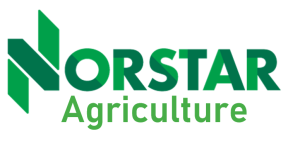
An Innovative Product for Regenerative Ag
The Norstar H3 Humic Acid Trial exists to reduce fertilizer usage in conventional farming while illustrating the economic value this type of product offers to farmers. This trial is comprised of two types of crops: barley and canola. In order to demonstrate the effects that this product has on the nutrient uptake of each plant and its effect on creating healthy and moist soils, both crops will contain one strip that has been treated with H3 humic acid and one strip without. For this project, a spray application of H3 Humic Acid will be administered on problem soils in the fall, while in-furrow applications will be implemented during the growing seasons. This application creates a huge surface area in which nutrients can reside and for subsequent translocation into the roots—reflecting a high Cation Exchange Capacity or CEC.
During this trial, disease pressure, stand count, drought, moisture pressure and general soil texture will be observed.
H3 humic acid is a natural biosignature of the soil, possessing humic, fulvic, and humin, and to that end, it bolsters the soil’s microbiome for regenerative ag. H-3 contains the major dynamics of ionization and conformation, along with the dynamic fusion of organic chemistry and biology. Among its myriad effects, it enhances cell division and elongation, increases root growth, and augments nutrient uptake, ensuring strong soil health, nutrient, and water-use efficiencies across the board.
Although the value of H3 humic acid is known from a plant-health perspective, this trial’s chief goal, as delineated above, is to highlight its value to the farmer by demonstrating the dynamic effects this product has already demonstrated in terms of yield, quality, soil health, and moisture retention capacity, along with profitability. In addition to the dynamic effects noted above, it also serves as an excellent medium for salt remediation, soil compaction reduction, and reclamation, along with reducing abiotic stresses. But perhaps among its most crowning achievement from a myriad of standpoints, including economically, is that it has netted growers significant nutrient savings in terms of N, P, and K, with rates of 15, 20, and 15 percent, respectively. On top of that, it has resulted in great, quantifiable return-on-investment, or ROI, as documented through field experiments in Alberta, which has strong abiotic conditions.
The bottom line is that H-3 reflects lessons learned from closely assessing soil’s natural, intelligent design, which ensures good, healthy soils and crops, as well as great ROI. Given its success and quantifiable results from field experiments, surely many more farmers will be drawn to H-3’s benefit in the months and years to come.
Access the Discovery Farm Langham Field Reports
The Field Reports are an annual overview of all activities that happened at Discovery Farm Langham during the growing season including demonstration research, events and knowledge transfer.